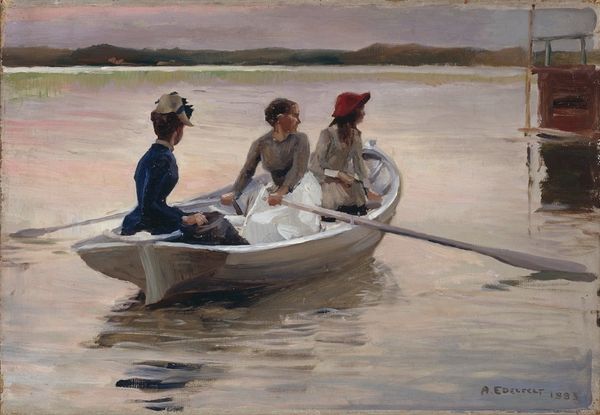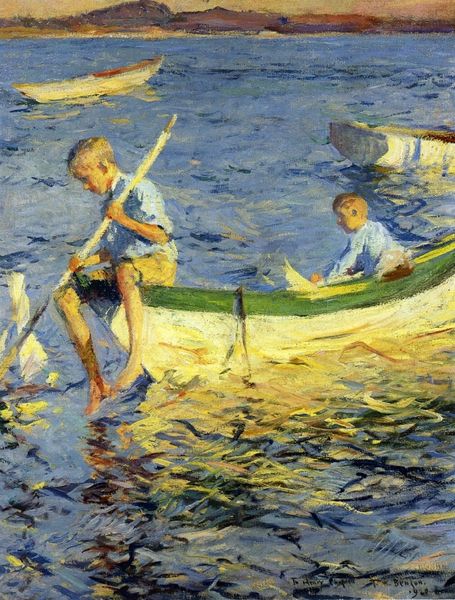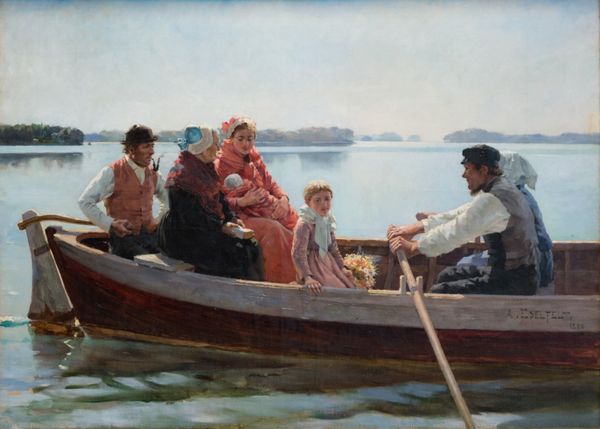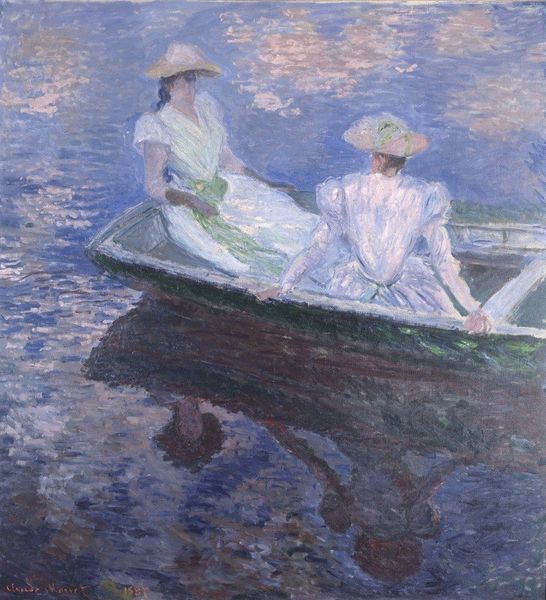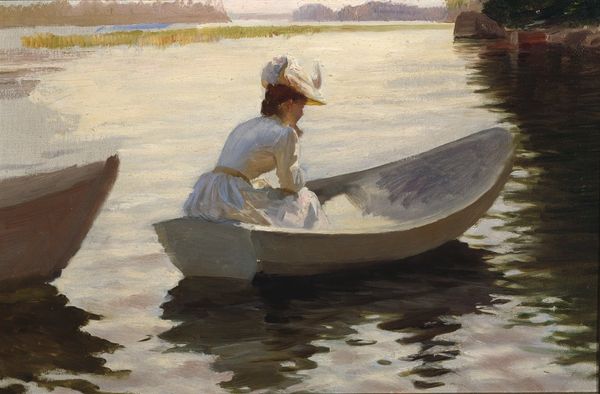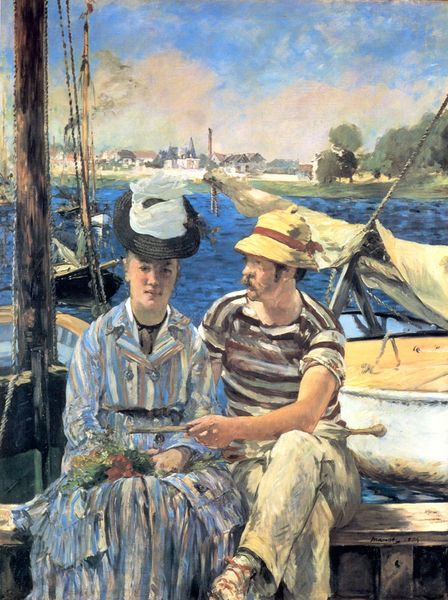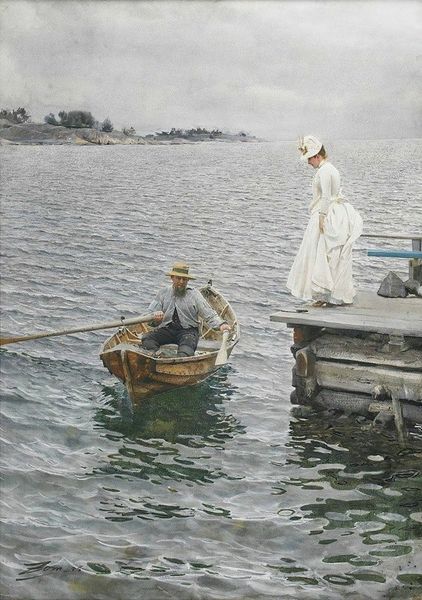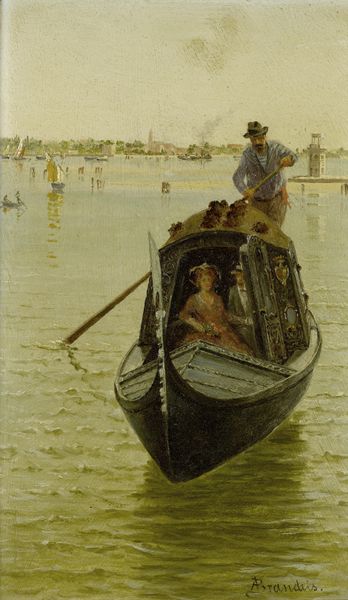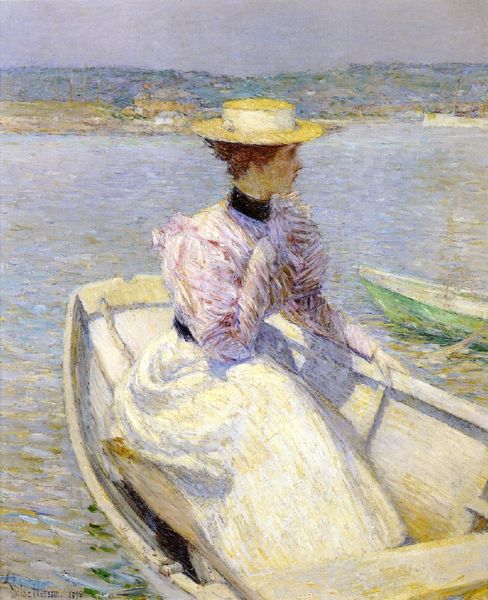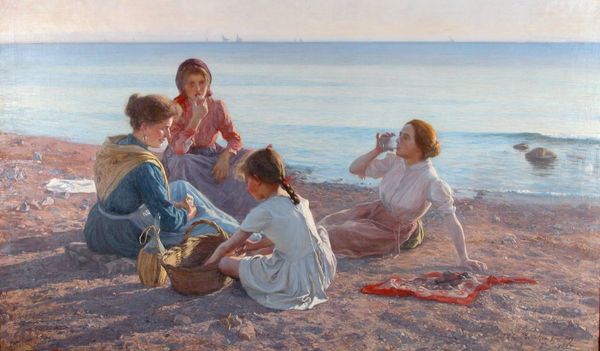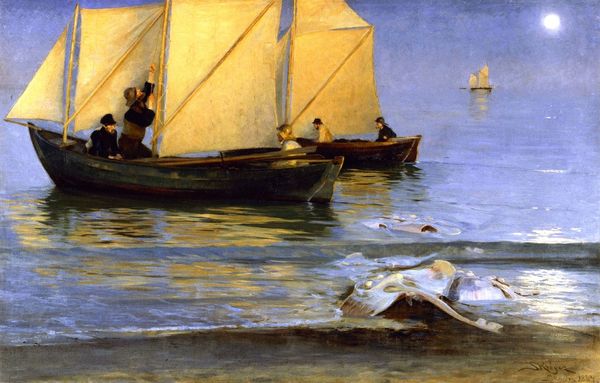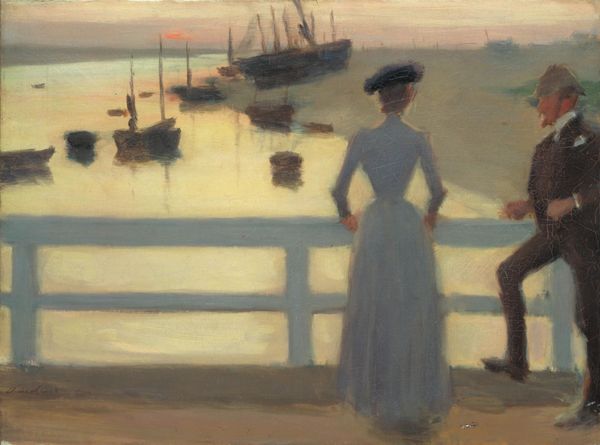
Copyright: Public domain
Editor: This is Frank Benson’s “Calm Morning” painted in 1904. The painting utilizes oil paint on canvas and showcases three children in a rowboat. The whole scene is so bright and airy! It feels…peaceful. How do you interpret this work? Curator: Beyond the apparent tranquility, I see a moment laden with complex social and gender dynamics specific to that era. Look at the children's attire; crisp white dresses, neatly pressed shirts. Benson is portraying a very particular class and ideal of childhood. How do these visual cues speak to broader narratives about privilege and societal expectations at the turn of the century? Editor: That's an interesting perspective. I was so focused on the aesthetic beauty that I didn’t really think about that. Curator: Precisely! The Impressionistic style itself isn't neutral; it's intertwined with the burgeoning middle class and their leisure activities. The ‘calmness’ might actually mask a more insidious narrative of exclusion and the reinforcement of social hierarchies through seemingly innocent imagery. What do you think is Benson trying to capture? Is it innocence or manufactured serenity? Editor: I guess I assumed the painting was simply documenting a nice scene, but your reading makes me think about what's not shown and who is excluded. It really adds another layer. Curator: Absolutely, and think about gender too. What roles are the children enacting here? Are there differences, maybe unspoken expectations or constraints suggested? How do you feel after considering the socioeconomic dimensions? Editor: Definitely more to unpack than initially meets the eye. Now it makes me question everything that feels idyllic about the scene. Curator: Art serves as a powerful medium, prompting questions about societal structure. This journey allows you to understand art as a means for social engagement and philosophical inquiry, which can then inform your interpretations of the piece.
Comments
No comments
Be the first to comment and join the conversation on the ultimate creative platform.
